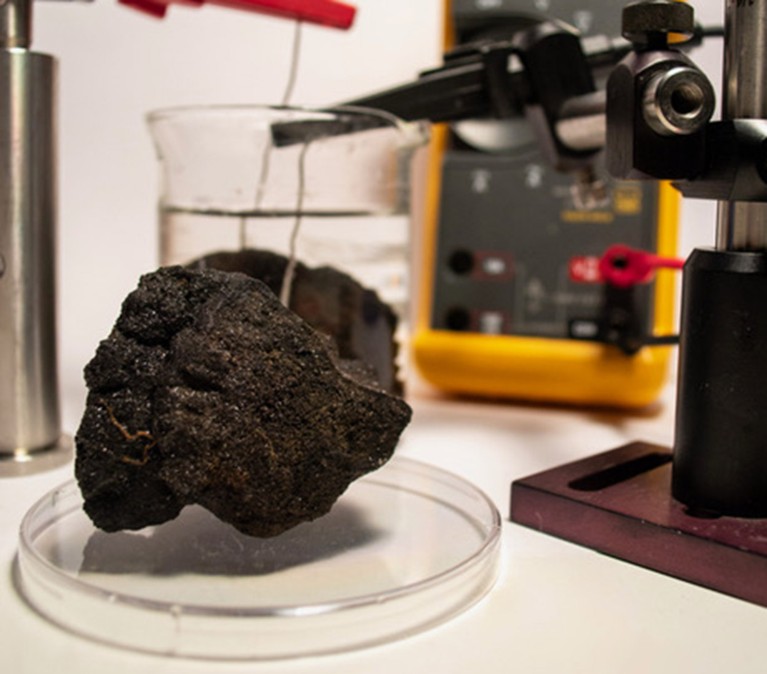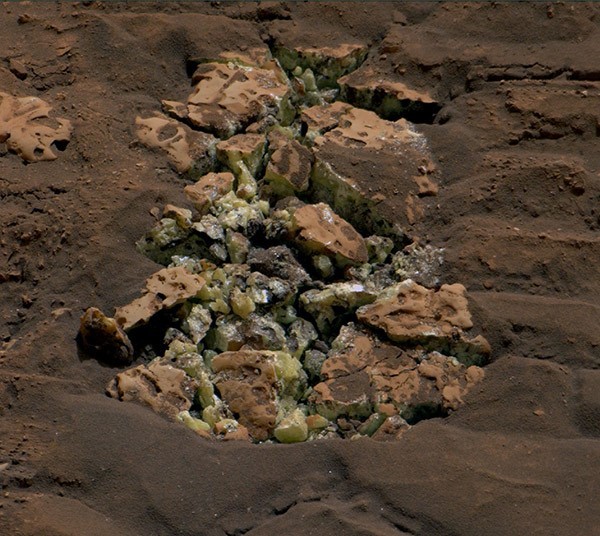Hello Nature readers, would you like to get this Briefing in your inbox free every day? Sign up here.

A polymetallic nodule found on the sea floor, which researchers think could be involved in the oxygen production.Credit: Camille Bridgewater
Something is pumping out large amounts of oxygen at the bottom of the Pacific Ocean, at depths where a lack of sunlight makes photosynthesis impossible. The find has surprised scientists and the source remains a mystery. The oxygen might be generated by metal-rich mineral deposits, or nodules. To researchers’ surprise, they measured voltages of up to 0.95 volts across the surface of the nodules. It is possible that the nodules catalyse the splitting of water into oxygen and hydrogen, but more experiments are needed.
Reference: Nature Geoscience paper
US vice-president Kamala Harris looks likely to become the Democratic candidate for president — stirring optimism among many scientists. Health and science have been a part of Harris’s life since an early age: her mother, Shyamala Gopalan, who Harris cites as a major influence, was a leading breast-cancer researcher. Harris has shown high-profile support for access to reproductive healthcare and maternal health issues more broadly. And, as a senator, Harris co-sponsored efforts to improve the diversity of the scientific workforce.
The 2015-2016 outbreak of the Zika virus in Brazil caused thousands of birth defects after women were infected during pregnancy; now the country is facing the same fears with the Oropouche virus. Brazil’s health ministry has reported four cases of microcephaly — a type of reduced brain development — in newborns of infected mothers and one fetal death that might be associated with the virus. The virus is transmitted by Culicoides paraensis, a tiny midge found across the Americas. Cases of Oropouche fever have surged in Brazil since late 2022. “The cases are worrisome and a sign to be alert,” says virologist Amilcar Tanuri.
Features & opinion
“Every month, a number of legitimate journals are hijacked,” says economist Anna Abalkina. Journal hijacking involves sophisticated copycat websites that impersonate a legitimate publication, to persuade authors to hand over article-processing fees. Researchers can consult Retraction Watch’s database of hijacked journals and use tools like Think Check Submit to assess journal quality before sending manuscripts.
The experience of closing a lab varies hugely between countries, and can depend on whether you are handing over a legacy, or closing abruptly. In Argentina, physicist María Teresa Dova wants to ensure a smooth handover of her lab: “I always try to train my younger researchers to do all the things I’m doing.” In the United States, when the lead investigator leaves it is more likely the entire lab will shut. For microbiologist Roberto Kolter, this meant gradually downsizing his team several years before retirement. But he still has a legacy: Kolter’s unique collection of over 10,000 bacterial strains will be kept and managed by his institution.
Nature Careers Podcast | 23 min listen
Ten Nature contributors share their current book obsessions, which include an unforgettable tour of India’s beautifully fragile landscapes, a biographical journey through the evolution of the egg and a powerful guide of women whose knowledge of nature changed their lives — and history.
Image of the week

When NASA’s Curiosity rover drove over and crushed a rock on its travels, it revealed a surprise: these yellow crystals of elemental sulfur (in this image, the colour has been adjusted so the crystal appears as it would on Earth). It’s the first time sulfur has been found in its pure form on Mars. “It shouldn’t be there, so now we have to explain it,” says Curiosity mission project scientist Ashwin Vasavada. (Space.com | 4 min read) (NASA/JPL-Caltech/MSSS)





More News
Mosquito-borne diseases are surging in Europe — how worried are scientists?
Islands are rich with languages spoken nowhere else
I fire darts at whales to help track their movements